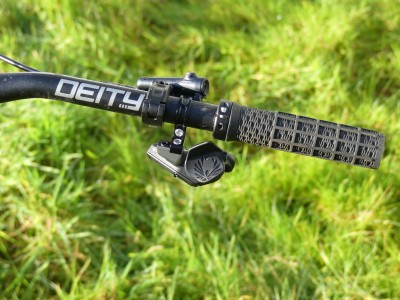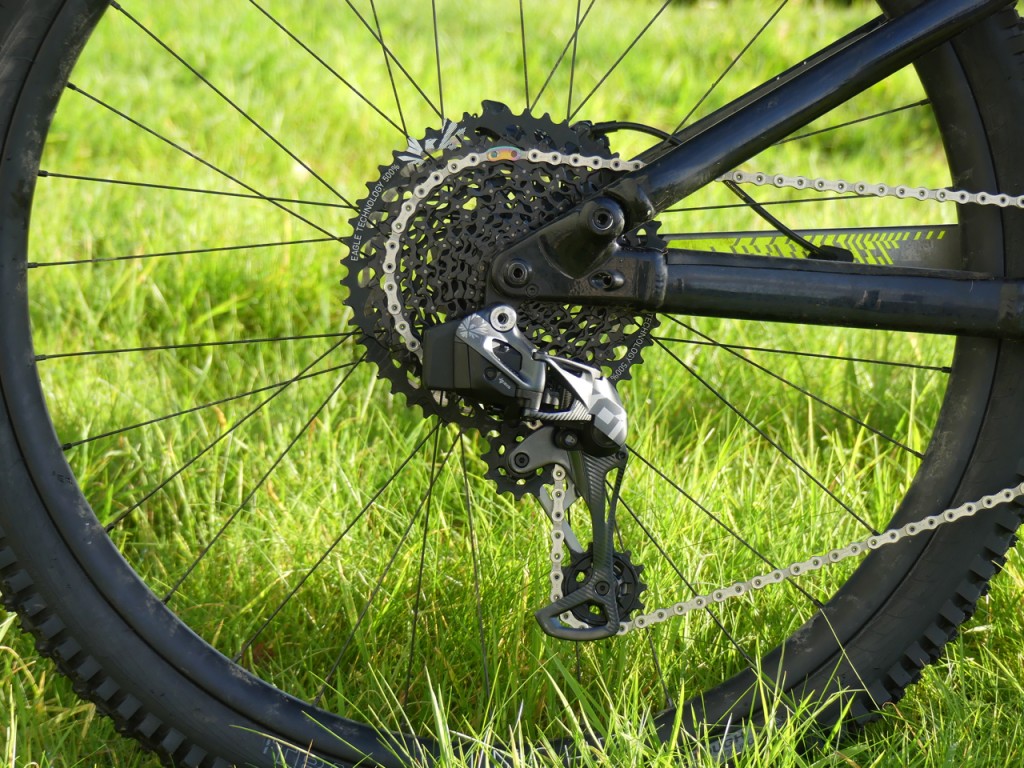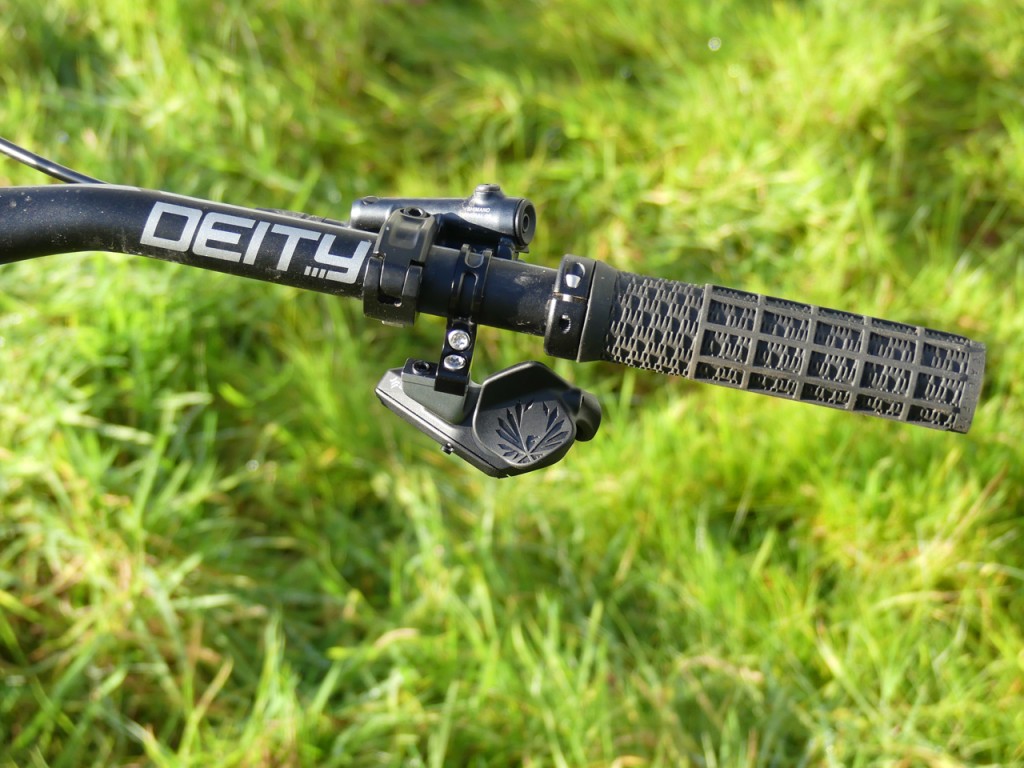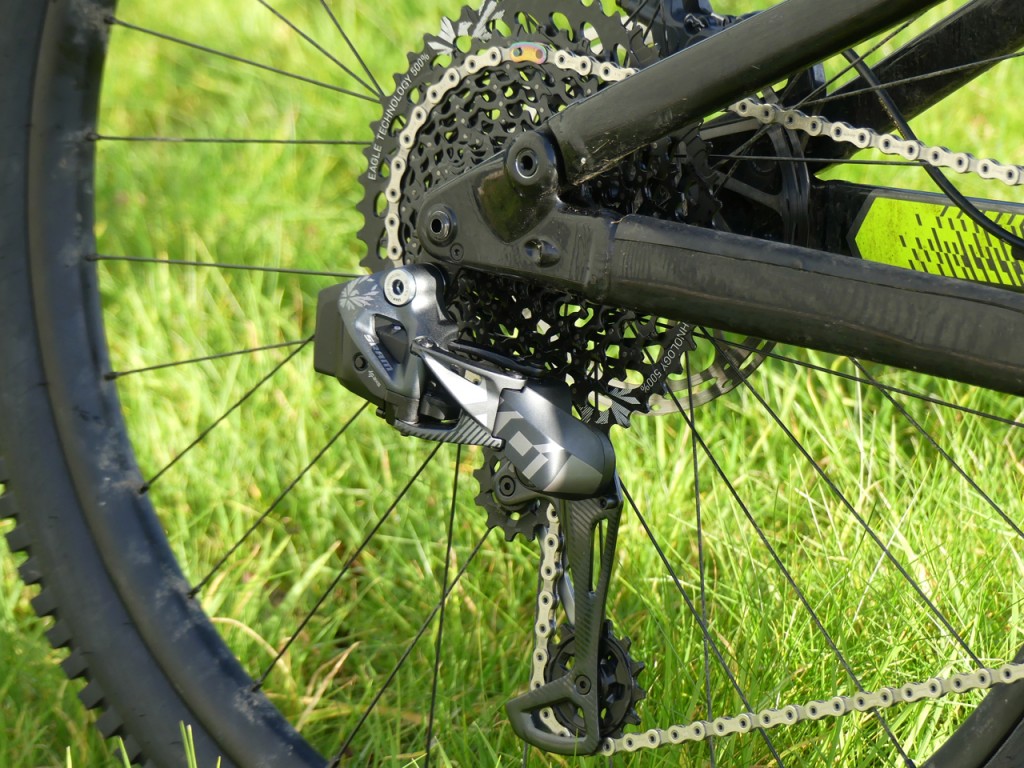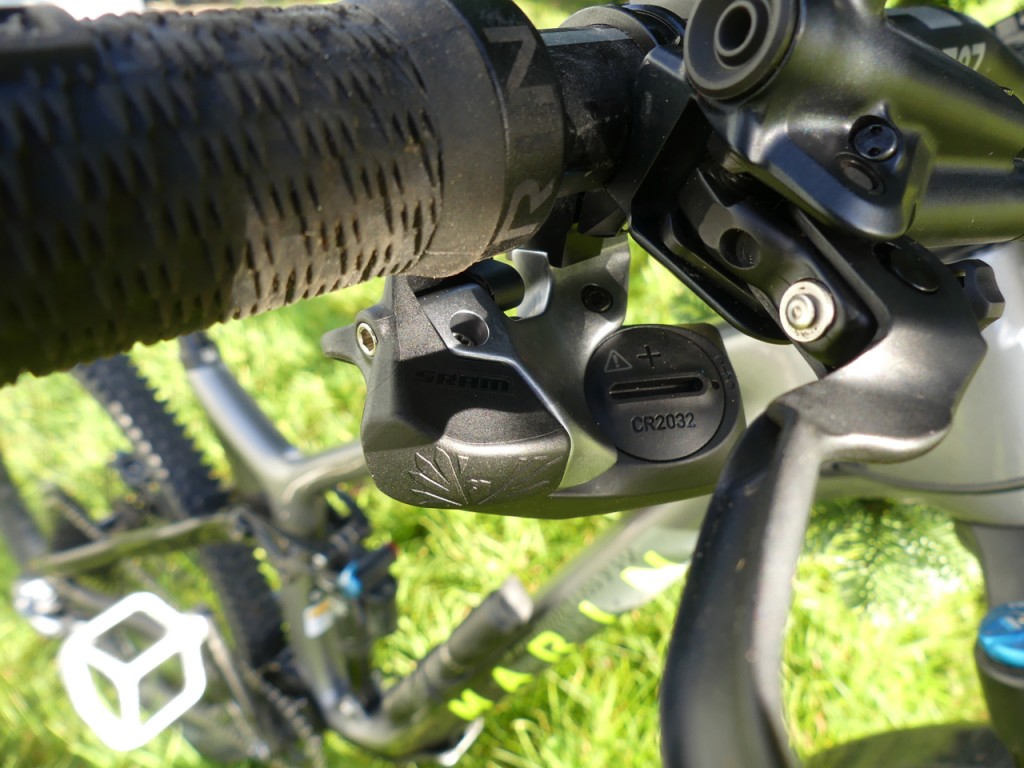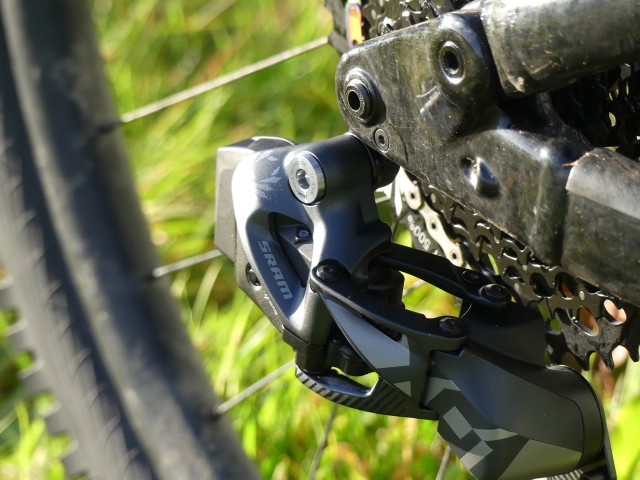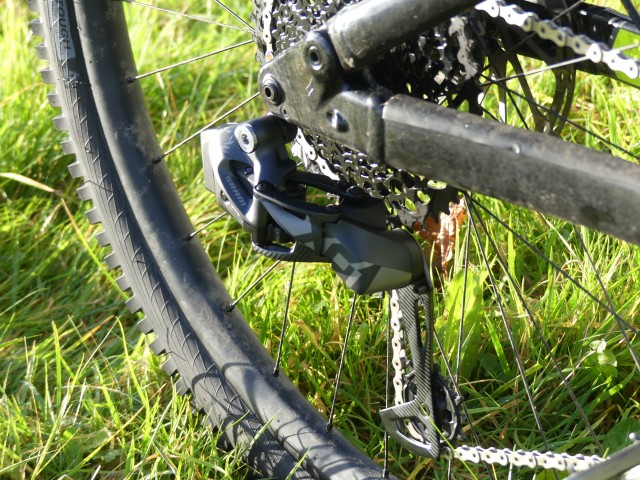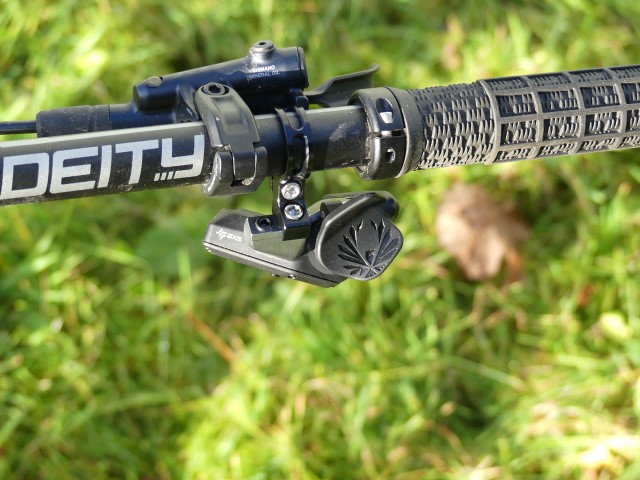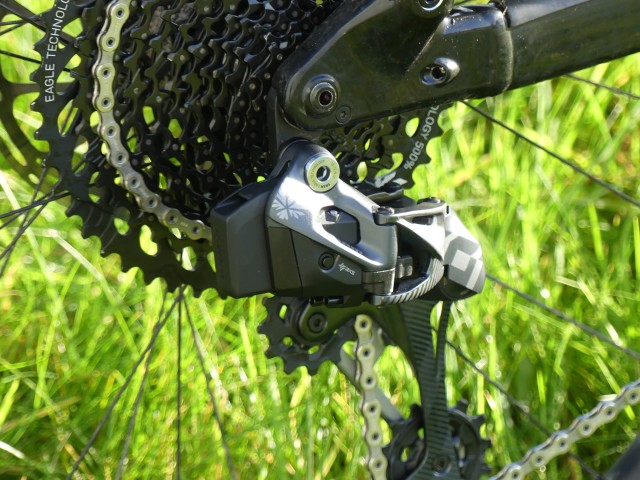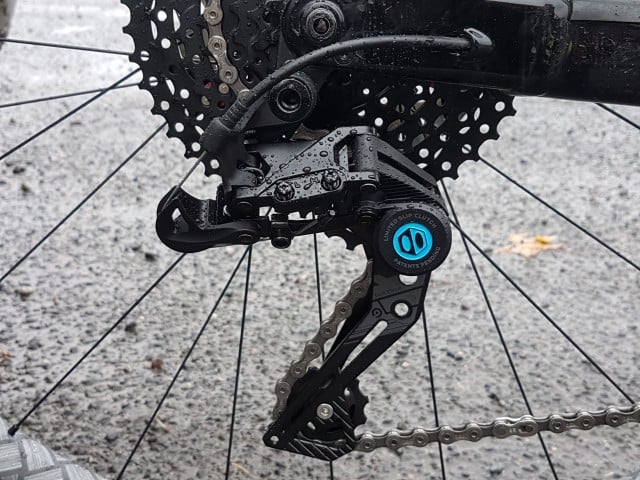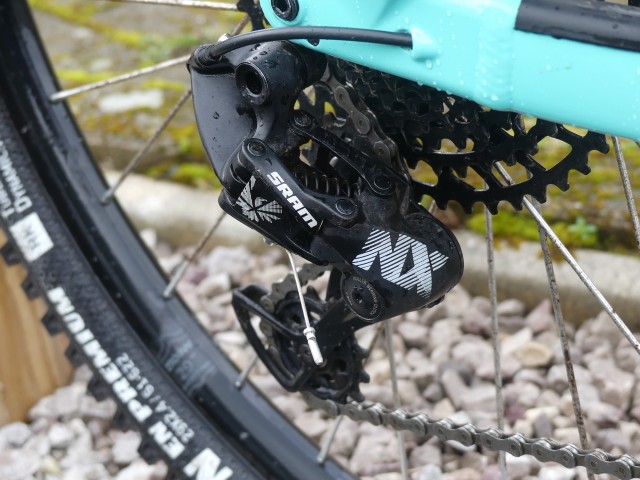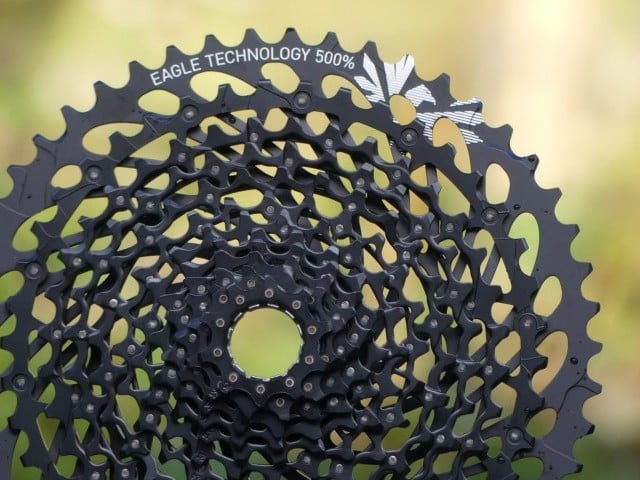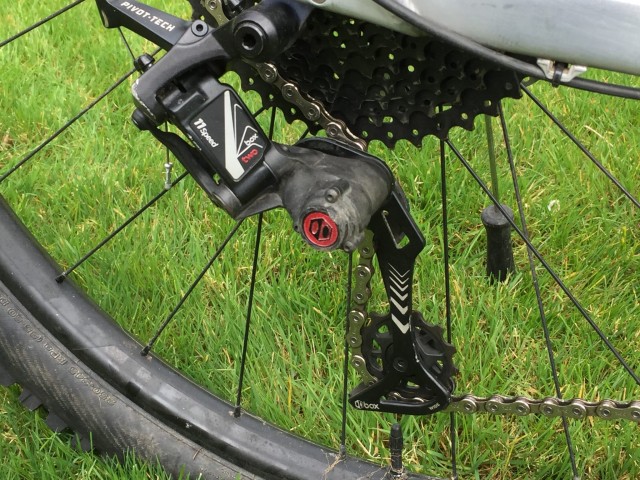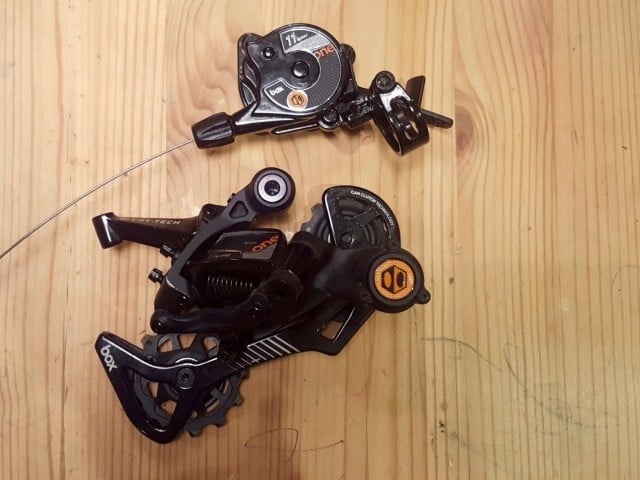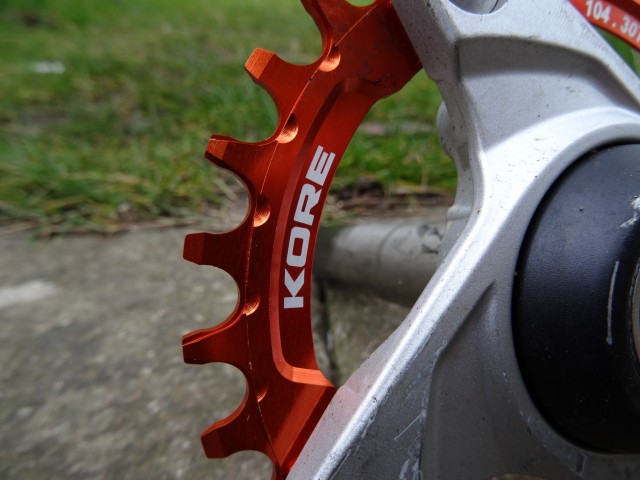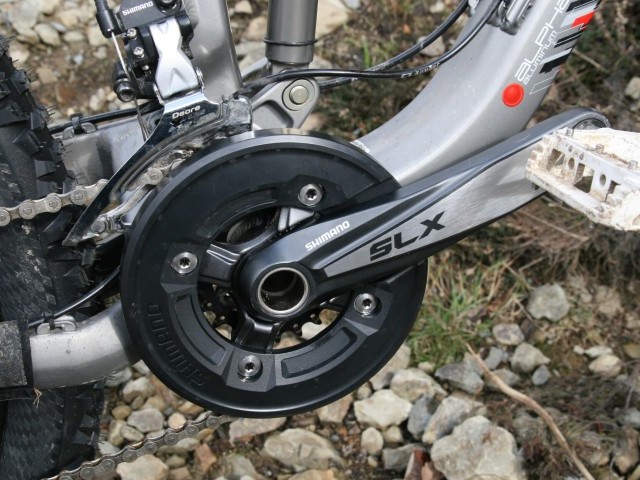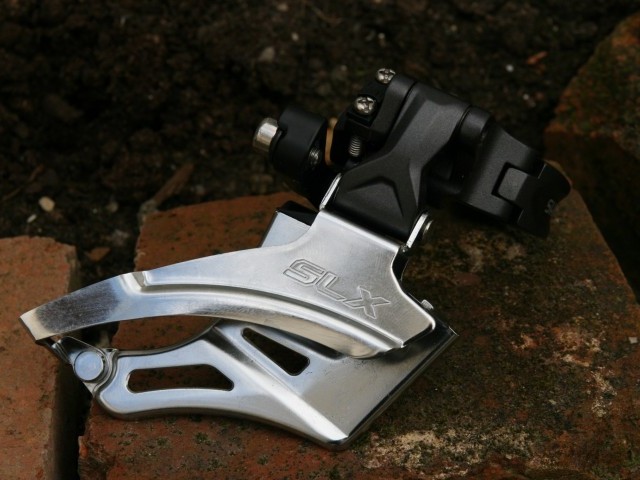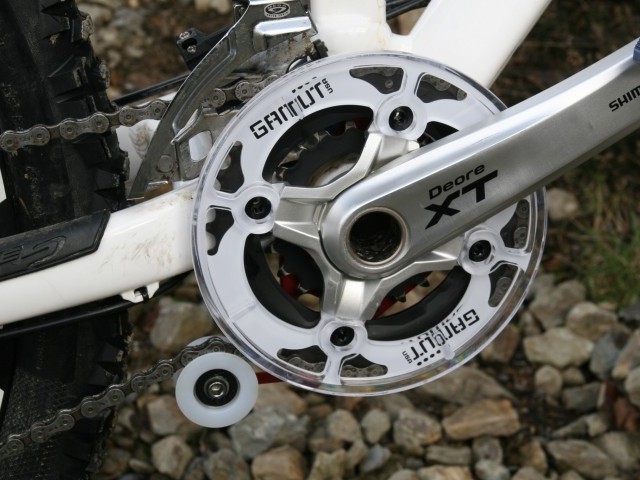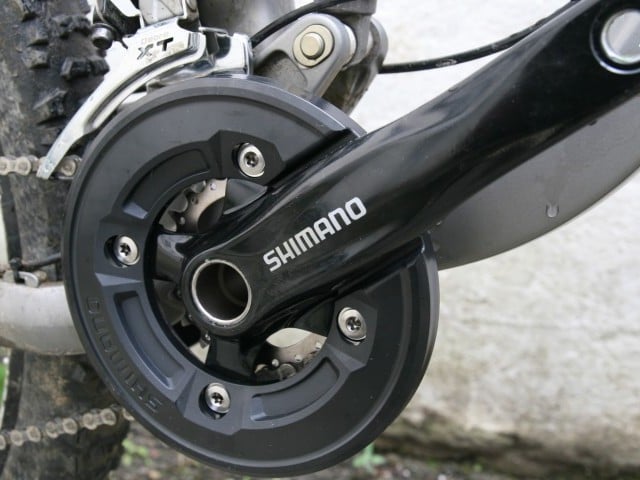At A Glance
Although electronic shifting has been around for a while, SRAMs AXS is the first wireless transmission to hit the mountain bike market. Shimano's Di2 may offer electrics with cables, but SRAM has ditched any form of cables for wireless magic. Available as an entire groupset, as separate components, or as an upgrade kit there are multiple ways to get into the wireless world. This kit comes with a mech, shifter and charger to take your existing drivetrain and convert it.
Buy Drivetrain on
Essentially this is wireless Eagle, the same cassettes, chainrings and chains work with the system, the only difference is the shifter and rear mech. The mech looks familiar but appears slightly bulkier with space for the motor and the battery to attach, however, the mech cage is 10mm shorter for better clearance. The mech has another feature to help protect itself, in the form of the Overload Clutch that on sensing an impact, disengages to allow the mech to move, before returning to its original position. The battery is easy to take on and off and charged on the supplied charger with about 20hrs of use between charges.
The shifter itself is much less familiar with an entirely different feel for shifting gears with more of an up/down thumb motion rather than pushing paddles. There are essentially two buttons, for up and downshifting but the downshift can be accessed from the other side with a knuckle. These buttons are customisable, and if you're also using the wireless Reverb then you can programme all the buttons however you like.
At a retail price of £975 for the mech and shifter, it's no minor upgrade, but new technology is always expensive and SRAM are know for a fairly speedy trickle down into lower price brackets.
Set-Up
The liberating feeling of removing internally routed cables is not to be underestimated knowing that you'll not have to re-thread the cable through the frame! Split the chain, bolt on the rear mech and attach the shifter and it's nearly all done. The b-tension screw needs to be set right, as usual, then with a couple of button presses, you can trim the mech to align with the cassette, then dial in the limit screws to make sure it won't take a trip into your spokes. This is very easy to set up and again, very liberating!
On the trail
It's hard to get over the initial excitement of the quiet buzzing noise the rear mech makes on every shift. It feels futuristic and exciting just shifting between the gears and I spent my first few rides shifting far more than normal just for fun!
Getting used to the new way of shifting took very little time, the biggest adaptation came from learning how the new shifter worked. Its buttons/paddles don't move in the same way as a traditional shifter and need much less force to activate them. The shape is also new with more of an up or down motion from your thumb to make it happen. With the light action there were a few miss-fires as I got used to it, but moving the shifter around on the bar helped get it in the best location.
The main story here is consistency, with every shift feeling the same, every time. It's always the same force on the shifter, and always the same time taken to hop between the cogs. Jumps of one shift feel as quick, or quicker than a normal system, but dumping lots of gears in one go requires the button to be held down and isn't quite as rapid as a cable shifter when you push your thumb through its entire motion.
I had some wonders about how conditions may affect the rear mech, but after a winter of truly filthy weather, I can confirm it has had zero issues. It's waterproof, having been submerged in flooded trails and covered in mud without any real change in performance. Taking a ride up into arctic conditions on the mountains over Christmas, I wondered if the snow, ice and windchill would kill the battery. Performance throughout the freezer test was consistent and reliable, in fact, better than a cabled system as nothing froze up!
For a while, I thought I could never go back to mechanical shifting, but within a few minutes of riding a normal mech, I was happily shifting like a Luddite again. AXS certainly offers a high quality of shifting and a futuristic feel, with definite gains in simplicity and user experience but it might not change your life. Despite this, it's certainly staying on my bike for the foreseeable future!
If you want to tailor your shifting experience then the AXS app can help you out although it's not compulsory. You can create bike profiles, adjust shifting preferences, update firmware all from your phone. The issue here is that the app isn't faultless, and I found connecting through the app to be unreliable on my android phone.
As yet I haven't dared run it out of battery, and usually, remember to charge it every few rides. I also, thankfully have not smashed the mech into anything on the trail, although the overload clutch may have helped me out on one or two occasions. Although I tried to get used to it, the ergonomics of the shifter could do with a little refinement I would simply prefer something that replicated the position of a standard shifter, but with buttons.
Overall
Consistent and reliable shifting time after time, SRAMs wireless shifting has proven itself by providing perfectly consistent shifting. The price is restrictive and the shifter may not suit every rider but AXS is certainly a leap forward in drivetrain performance.

This review was in Issue 63 of IMB.
For more information visit SRAM MTBRelated
By Ewen Turner
Ewen Turner is a self-confessed bike geek from Kendal in the Lake District of England. He runs a coaching and guiding business up there and has a plethora of knowledge about bikes with an analytical approach to testing. His passion for bicycles is infectious, and he’s a ripper on the trails who prefers to fit his working life around his time on the bike.

